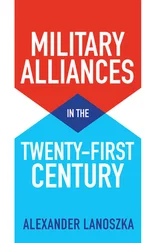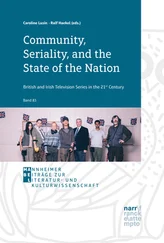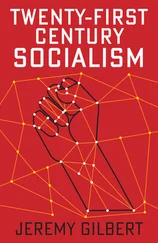The terrorists and their patrons clearly wish to thwart any moves in the direction of a rapprochement between the two countries, which would thwart their destructive Islamist agenda. But the Mumbai terror assault only seemed to confirm that — though President Zardari is adept at going on Indian television and saying what his viewers across the border wish to hear — the peacemakers in Islamabad are not the ones who call the shots in that country.
Pakistan at first predictably denied any connection to the events, but each passing revelation rendered its denials less and less plausible. President Zardari even claimed that the captured terrorist was not Pakistani. It took an intrepid British journalist of Pakistani descent to track down Ajmal Kasab’s native village of Faridkot in Punjab, report his parents’ identities and confirm his background. The parents were promptly spirited away by the Pakistani authorities, the villagers silenced and the next journalist who tried to follow the story, an American, was beaten up for his pains.
Those first weeks of Pakistani denial after 26/11 rankled, because many in India had thought — having paid too much attention to the earlier positive noises from President Zardari — that when 26/11 happened, it would be a golden opportunity for the civilian government of Pakistan to stand up and say, ‘We’re in this fight together. The people who did this to you are going to do the same thing to us, and we want to work alongside with you. Our intelligence agencies will join you in the investigation.’ Instead of which, we got denial, obfuscation, delay and deceptive sanctimony.
When Zardari initially agreed to India’s request for the ISI chief to visit New Delhi, he stated that Pakistan ‘will cooperate with India in exposing and apprehending the culprits and masterminds’ behind the attacks. It soon became clear that this was not an objective unanimously shared in Islamabad. The ISI is not exactly keen on cooperating with an investigation into the massacre’s Pakistani links. The Mumbai attacks bore many of the trademarks of the extremist ‘fedayeen’ groups based in Pakistan, notably the Lashkar-e-Taiba, which in the past has benefited from the patronage of the ISI. Whether the Pakistani military is orchestrating the violence or merely shielding its perpetrators, it clearly has no interest in seeing its protégés destroyed. It soon became apparent that for all of President Zardari’s soothing words, the Pakistani government cannot ensure that different elements of the state fall in line with the government’s vision. And the country’s civilian government — India’s official interlocutors — dare not cross the red lines drawn by the military, for fear of being toppled. If India is to take Islamabad’s professions of peaceful intent seriously, credible action with visible results is required. It has not been much in evidence in recent years.
Despite its denials and its disingenuous calls for more proof — all of which had the effect, whether by accident or design, of buying time for the perpetrators to cover their tracks, to husband their resources and to reinvent their identities — Pakistan has never been more isolated in the international community. It is now universally accepted that the massacre in Mumbai was planned in and directed from Pakistani territory, and the inability of the Pakistani government to prevent its soil from being used to mount attacks on another state make a mockery of its pretensions to sovereignty. No one wishes to undermine President Zardari’s civilian government, which remains the one hope for something approaching a moderate, secularist regime in that country. But it is an understatement to point out that Zardari does not enjoy the unstinting support of his own security establishment. And his weakness makes it less and less useful for outsiders to shore him up.
Before the attacks on Mumbai, the United States had been promoting a reduction of India — Pakistan tensions, in the hope — openly voiced by then president-elect Barack Obama (and repeated by him in office) — that this would free Pakistan to conduct more effective counterinsurgency operations against the Taliban and Al Qaeda in its north-western tribal areas. Pakistan has six times the number of troops deployed against India than it has deployed on its western border to fight the Taliban and Al Qaeda. Obama therefore called for promoting a rapprochement between India and Pakistan as a key objective of US foreign policy in the region. Peaceful relations with India would have permitted more resources to be shifted from east to west. Instead the perennial danger is of the Pakistani military, despite India’s restraint, moving in the other direction. Washington fears that India — Pakistan tension will make its own task in Afghanistan more difficult. But for a long time, Washington found few takers in India for continuing a peace process with a government that did not appear to control significant elements of its own military. Now that India and Pakistan are talking, the Pakistani military has been able to move some of its military resources westward, with no discernible impact on the country’s security.
Ironically, Zardari had proven to be a useful ally of the United States before 26/11; in addition to overtly lowering the temperature with India, he was cooperating tacitly with American Predator strikes against the Islamic extremists in the Afghan borderlands, much to the resentment of pro-Islamist elements in his own military. This cooperation would be jeopardized if the seething anger throughout India at the Pakistani sponsors of terror boiled over; the hardliners in Islamabad’s army headquarters will then have the justification they need to jettison a policy they dislike and turn their weapons back towards their preferred enemy, the Indians. Obama had pointed out during the 2008 US presidential election campaign that American military assistance to Pakistan was being diverted to the purchase of jet aircraft and battle tanks aimed at India, rather than on the tools needed to combat the militants in its lawless tribal belt. After Mumbai, Washington’s biggest fear became that the Pakistani military might seek to move its forces away from the western border with Afghanistan, where the United States wants them to aid NATO’s fight against the Taliban and Al Qaeda, and reinforce the eastern border with India instead. This is why it is important for India not to give them any excuse to do so.
With Pakistan initially denying all responsibility for the murderous rampage that was planned on its soil, India seemed to have no good options. It was a typically Pakistani conundrum: the military wasn’t willing, and the civilian government wasn’t able. And the fear remained that expecting Zardari to fulfil even India’s minimal demands might be tantamount to asking him to sign his own death warrant. What we needed done had to be done in a way that did not undermine the civilian government.
At the same time, India had to act: we all knew that anything that smacked of temporizing and appeasement would further inflame the public just a few months before national elections were due. But New Delhi also knew that though some hotheads in India were calling for military action, including strikes on terrorist facilities in Pakistani territory, this would certainly lead to a war that neither side could win. If anything, such an Indian reaction would play into the hands of the terrorists, by strengthening anti-Indian nationalism in Pakistan and easing the pressure on the Islamists. And since both India and Pakistan have nuclear weapons, the risk of military action spiralling out of control is always too grave for any responsible government to contemplate.
Some loud Indian voices on the country’s ubiquitously shrill 24/7 news channels pointed enviously to Israel’s decisive action against neighbouring territories that have provided sanctuary for those conducting terrorist attacks upon it. They clamorously asked why India could not do the same.
Читать дальше












